Welcome to my Academic Blog! Here you will find my different analyses, research and sources for the Digital Media: Sources and Significance Module.
Don't wanna be here? Send us removal request.
Text
Reader - Sources and Significance
1.- Arditi, D. (2019) ‘Music Everywhere: Setting a Digital Music Trap’. Critical Sociology, 45(4-5), pp. 617-630. Available at: https://doi.org/10.1177/0896920517729192 [Accessed on 07.11.2023]
In this article, the author discusses how capitalism has changed the way we consume music and that the digitalization of music has created what he calls a ‘digital music trap’. He also questions the cultural position of listening to music; he establishes that before the digital era music was consumed more ethically and in a very limited way, but now music is everywhere and it has lost its initial purpose of ‘listening for contemplation’. The author also proposes that because of this, people don’t pay attention to music anymore, so he points to the necessity for artists to find new ways to catch the public’s attention. I find this article relevant and very interesting because I want to direct my career towards the music industry, more specifically to the creative content creation and marketing side, so it is relevant that I understand how music is consumed nowadays so I can develop efficient strategies and content for artists/labels.
2.- Bennett, L. (2012) ‘Patterns of listening through social media: online fan engagement with the live music experience’, Social Semiotics, 22(5), pp. 545-557. Available at: https://doi.org/10.1080/10350330.2012.731897 [Accessed on 02.11.2023]
In this article, the author explores and discusses the way social media has changed how fans engage with music and artists nowadays and how this has had a positive effect as it is shifting the boundaries of live music experiences. The author proposes that the use of social media is broadening the ways fans can interact with artists and music events without even being present. This article also presents a study made to U2 and Tori Amos fans in an attempt to demonstrate how they are creating a real-time live music event by engaging in this social media practice.
This article is relevant to my practice because it contributes to my understanding of how social media is impacting the music industry. Digital media is a great part of this industry and of how artists market themselves and their music; especially on social media; so it is helpful to keep track of how it is revolutionizing the way fans interact with music and media to create more engaging content. Even if this is a source from 2012 it is still relevant as social media has kept evolving ever since and it’s even more relevant in our society nowadays.
3.- Chandler, G. (2009) Film Editing: Great Cuts Every Filmmaker and Movie Lover Must Know. 1st edn. California: Michael Wiese Publications
Being able to effectively tell a story through images is a very important part of being a visual artist. With this book, Gael Chandler guides you through the different and most common types of editing cuts used in cinema. It is a very visual resource and it explains every technique with visual examples, making it easier for the reader to understand how to apply them to their work effectively. This source is quite old but still relevant because the techniques and theories discussed in it continue to be used in cinema and editing.
I find this source useful for my practice because as an animator and visual artist a big part of my job is to tell stories and translate messages into images/moving images, so this helps me to better understand how to compose images and how to edit my content in a way that engages with my audience.
4.- Chang, C. (2013) ‘Imagery Fluency and Narrative Advertising Effects’, Journal of Advertising, 42(1), p.p. 54-68, Available at: https://doi.org/10.1080/00913367.2012.749087 [Accessed on 02.11.2023]
Narratives are part of almost everything we consume in media and they are a great way to create engagement in the audience; advertising is not the exception. Throughout this article, the author explores the cognitive processes involved in the processing of images and narrative ads as a whole. She proposes that conceptual and perceptual fluency makes narratives comprehensible and studies how the comprehension of a narrative is affected by different subjective factors within the audience. To elaborate on that, the author carried out two experiments to analyze the different ways people process the narratives and which factors affect said process. Despite this article being from 10 years ago, the examples and processes it analyzes are still relevant to Advertising and Media in general.
I chose this article because I found it very interesting how it deeply analyzes the ways the audience process images and information as it is a vital part of any digital artist to ensure that the artifacts we create can be easily understood by our audience. I believe that this will help me to correctly apply narratives inside my work so I can create engaging content for my clients and my brand.
5.- Gordon, S. (2015) The Future of the Music Business. 4th edn. Milwaukee: Hal Leonard Corporation
In this book, Steve Gordon guides us through how the music business/industry works and how to succeed in it. He provides very useful tips and a blueprint for artists and anyone wanting to get into the industry. His main goal is to provide help to those interested in following this path and making it an easier process, unlike his own experience when he was starting to work in the music business.
I find this book insightful, and helpful for my practice; since I want to work in this industry I think it is relevant and helpful for me to understand how the music business works and how one can get into it. I am familiar with the general aspects of it but I have never truly gotten into understanding it to the core, so this allows me to nurture my knowledge on the subject.
6.- Grzegorczyk, T., Kaczmarek J., Sliwinski R. (2019) ‘Attractiveness of augmented reality to consumers’, Technology Analysis & Strategic Management, 31(11), pp. 1257-1269. Available at: https://doi.org/10.1080/09537325.2019.1603368 [Accessed on 20.12.2023]
Since the COVID-19 Pandemic, the way we use technology radically changed; it forced us to reimagine life as we knew it and to adopt new ways to communicate and do our regular activities. A great example of this is technologies such as AR and VR, which have become some of the biggest emerging technologies and are used in many different industries. Throughout this article, Grzegorczyk, Sliwinski, and Kaczmarek discuss the relevance of Augmented Reality and its appeal to consumers, as well as analyze the areas in which this technology is more useful. They also analyze the benefits and liabilities of its use.
This article is relevant to my practice because I’m in the process of learning everything about digital media technologies and how they can be applied in the creation of media. Augmented Reality is a very influential technology nowadays and it will just keep evolving, hence I must keep up to date on everything related to it and other relevant technologies so I can be a competent and prepared digital artist.
7.- Meeken L., Knochel A. (2022) ‘Glitching Form: Subverting Digital Systems That Capture the Physical World’, Art Education, 75(4), pp. 49-56. Available at: https://doi.org/10.1080/00043125.2022.2053478 [Accessed on 07.11.2023]
In this article, Meeken and Knochel explore how Glitch Art can help ‘sabotage’ the ways digital media is used and how it can help break and redefine the limits it has. The authors propose that teaching students how to use glitch art and to experiment with the digital tools they have on hand can help them understand digital practices and become better at critiquing and engaging with them. Throughout this resource they explore 3 of the main approaches of doing glitch art: glitching at the point of capture, glitching using different software, and glitching the data that make up digital objects.This resource is relevant to my practice because I am interested in creating Glitch Art and implementing the different ways of glitching into my work, hence it’s very important and useful that I understand how this process works so I can excel at incorporating it into my practice.
8.- Popper, F. (2007) From Technological to Virtual Art. 1st edn. Cambridge: MIT Press
In this book, Popper examines how virtual art (immersive and interactive media art) has developed throughout the years and has become an important part of today’s digital media art. He analyses that there is a humanization of technology inside virtual art and that this allows artists to create more creative work and to better integrate their aesthetics with emerging technologies.
Popper was a renowned aesthetician, curator, teacher, and critic, and he was always trying to bring light to technology-inspired art and interactive media, so although his book is relatively old, it is a relevant source because it sets a precedent to my understanding of these technologies and digital mediums; I consider that it is important to know, question, and understand where everything began and how technologies and virtual art techniques come to be what they are today.
9.- Tryon, C. (2013) ‘Reboot cinema’, Convergence, 19(4), pp. 432-437. Available at: https://doi.org/10.1177/1354856513494179 [Accessed on 09.11.2023]
This article explores and discusses reboot cinema and how it affects the way cinema is made and consumed nowadays. Tryon explains the reboot phenomena using some of the most known reboot franchises as examples such as The Amazing Spider-Man, Batman, and James Bond, among others. He also explains how reboot cinema is not just about reviving old stories but it’s also about rebooting and renewing technologies used to project and sell movies. Despite this source being 10 years old, the subject it addresses is still relevant as the discussed techniques and technologies are something that is still used in the industry up to this day.
This source is relevant to my practice because as an animator and digital artist I consider it important that I recognize and analyze the patterns around creating media and cinema as well as how technologies evolve, so I can keep on creating relevant media artifacts and know how to adapt to this ever-changing industry.
10.- Turner J., Tollison A. (2021) ‘The Evolving Communicative Value of Popular Music: Music Is Interpersonal Communication in the Age of Digital Media’, Journal of Broadcasting & Electronic Media, 65(3), pp. 357-376. Available at: https://doi.org/10.1080/08838151.2021.1957893 [Accessed on 06.11.2023]
Music is one of the strongest ways of communication among humans and now more than ever it is more accessible to everyone; it has become a way for people to relate with each other. Throughout this article, Turner and Tollison explore how the consumption of music can be a way of interpersonal communication and a strong tool for people to interact with each other, especially when talking about popular music. To support their argument, they surveyed to analyze music’s ability to communicate, parasocial interactions, listening patterns in streaming platforms and how people can nurture their identity through music.
I am very passionate about music and my professional practice has always been influenced by it. Music is part of digital media and music is intrinsically related to visual art. As I mentioned before, I am working towards directing my career to this industry so I want to gain all the knowledge I can regarding music consumption and how music impacts people so that I can create media/communication artifacts that keep on nurturing the relationship between fans and music.
1 note
·
View note
Text
Critical Analysis
Turner J., Tollison A. (2021) ‘The Evolving Communicative Value of Popular Music: Music Is Interpersonal Communication in the Age of Digital Media’, Journal of Broadcasting & Electronic Media, 65(3), pp. 357-376. Available at: https://doi.org/10.1080/08838151.2021.1957893 [Accessed on 23 December 2023]
Written by Jacob S. Turner and Andrew C. Tollison; both associate professors of communication at Merrimack College interested in communication, media, and research methods respectively; and part of the Journal of Broadcasting & Electronic Media, this article seeks to explore and analyze how music consumption through streaming platforms is a way of interpersonal communication and how it creates an outlet for people to express themselves and interact with each other. I chose pages 362 to 364 from this paper to analyze.
The article focuses on analyzing the consumption of popular music, which the authors describe for their arguments as a ‘super-genre’, covering typical pop music and many other music genres such as rock, hip-hop, and folk, among others. To support their arguments they carried out several surveys and research to examine the complex relations between the consumption of music, the formation of identity, and the different communication processes. Over the selected section (pages 362-364), the authors set a precedent for some of the subjects they analyze further in their research: ‘’Parasocial Interaction, ‘Popular Music, Identity Formation and Re-presentation’, and ‘Sharing Popular Music as an Act of Communication’. The text starts by exploring the phenomenon of parasocial interaction (PSI) and how it relates to popular music consumption; they analyze how listeners can develop one-sided relationships and a sense of friendship with the musical artists they listen to. It also deepens the role mass media has in its development and how frequent exposure to popular music can favor parasocial interactions. To support this analysis, the authors create a basis by citing studies that investigate parasocial interaction in different media contexts, aiming to bring attention to the parasocial capacity of popular music. It is mentioned that the ‘regular and repeated’ exposure to mass media artists is a key factor in the development of parasocial relationships; it is argued that these interactions are more likely to develop when there is an audio-visual interaction than when the interaction is limited or un-seen, as happens with songwriters or music producers. The discussion then extends to the role of social media platforms such as Facebook, TikTok, and Twitter in improving the social reach of popular music and the way it influences music-sharing practices, giving a contemporary dimension to the analysis.
Further in the text, Turner and Tollison talk about the relationship between music and identity; they argue that musical choices of popular music are directly influenced by our social identities and vice versa. The analysis highlights how it shapes our sense of self and our personal identity. A key point that the authors make is that popular music is an inter-modal form of communication; they propose that music is not just a listening experience but that it engages and involves many senses; since it can be heard, and perceived with the eyes (live performances, music videos), and felt (through dancing for example) it becomes a corporeal experience. The text suggests that this inter-modality is what contributes to the formation and evolution of our identity because it allows us to fully experience our bodies and identities.
The text also delves into the social aspects of music, proposing that music choices play a crucial role in facilitating inclusion in social groups; the choices serve as a medium through which people enact their social identity, from going to live music shows with people with similar interests to more personal actions like wearing artist’s merchandise.
The authors then move to examine the evolution of music-sharing among people and how the digital era has directly influenced it; in the early 2000s music was shared through physical CDs and MP3 files, whereas now we have several digital streaming platforms like Spotify. Another key point presented in the text is how these streaming platforms have had a positive impact on the consumption of music since they make music more accessible and facilitate music sharing. The text argues that the massive presence these platforms have is a result of their focus on being user-friendly and the integration of social features in them, which propitiates their use and allows users to connect through sharing albums, songs, and playlists. The text then brings attention to the impact Spotify has had on the music industry, mentioning that by 2019 it had more than 271 million users around the world. By acknowledging the impact of this platform on the industry and how it will only keep gaining relevance, the text connects theoretical concepts with real-world examples; this propitiates a more current discussion.
This article finds its strength in the use of numerous accredited academic sources and citations, it incorporates other studies into their research and explores other perspectives; this showcases the interest and great understanding of both authors on the subject and provides the analysis with credibility and a solid theoretical foundation for the arguments made in it. At the same time, the text effectively incorporates statistical data that adds a numeric perspective to the arguments: this numeric data supports the claim that the digital era has inevitably transformed the patterns of music consumption and makes the text more informative and persuasive.
Nonetheless, this text may present a limitation: its heavy reliance on that many citations could make it hard for the reader to keep up with what is being analyzed, and at the same time the lack of elaboration on potential biases of the referenced studies can cause the overall analysis to lose value. A more critical approach to the referenced studies could contribute to a more refined understanding of the text.
Overall, this article discusses a very relevant and intriguing topic. The research’s findings could offer interesting and valuable insights into the way music consumption is analyzed and approached. It creates an opportunity for further research on the subject and to explore deeper into the complex connection between popular music and human interaction and communication in the digital era.
0 notes
Text
Blog #9: Bratz recreation of Euphoria's 'bathroom scene': Intertextuality
For this blog post, I will analyze how Bratz used intertextuality to successfully recreate Euphoria's bathroom scene and by doing so attract new audience and attention to their brand.
As seen in the seminars, intertextuality states that every creative work is influenced in greater or lesser quantity by previous works, and so no work is original in its totality. The term was coined by Julia Kristeva in the 60s to 'describe the interconnection between similar or related texts, and how those connections shape an audience's interpretations, whether they realize it or not.' (Barron, 2022)
Bratz made use of self-conscious/deliberate intertextuality when recreating one of the most iconic scenes of the well-known HBO show 'Euphoria'. This iconic 'bathroom scene' went viral when the second season was released back in 2022, on it we can see 3 of the main characters of the show; Cassie, Maddy, and Cat. The scene is remembered because of the intensity of the mental breakdown that the character Cassie had in the bathroom result of her hiding that she was dating her best friend's (Maddy) ex.
Bratz managed to recreate the scene up to the very last detail, they even used the original voice recording from the show. The lighting, the character's factions, the clothes, everything is almost exactly the same. While watching the 3D animated Bratz scene you truly feel immersed in it, as if you were watching the original one, and it is funny because moments later it is revealed that this 'Euphoria scene' is being watched by the 'actual' Bratz: Cloe, Sasha, Yasmin and Jade
I remember that when this animated scene came out it went viral and everyone was talking about it. I was really impressed by the accuracy of the replication and it became one of my favorite 3D works; it really appealed to me at the moment because I was watching Euphoria at the time so it felt like an inside joke and I felt connected to the 'Bratz World' immediately.
While some might argue that the use of this kind of intertextuality rests value and originality to the work, I think that at least in this case it does the whole opposite and creates a new story with a new meaning, the simple fact that it is recreated in such a well done 3D animation makes this whole project so creative and original, even if it's the same scene of the original show it isn't actually the same because it has a new context and it can appeal to a newer audience.



References
Barron, K. (2022) 'What is Intertextuality? Definition and Examples', TCK Publishing. 2022. Available at: https://www.tckpublishing.com/intertextuality/ [Accessed: 23 December 2023]
Nambiar, P. (2022) 'Bratz Recreates Euphoria Drama Between Cassie and Maddy in Iconic Tribute', Trending. 17 November. Available at: https://www.hitc.com/en-gb/2022/11/17/bratz-recreates-euphoria-drama-between-cassie-and-maddy-in-iconic-tribute/ [Accessed: 23 December 2023]
09Studios, (2022) The Bratz Girls Watching Euphoria | Bratz Shorts 17 November. Available at: https://youtube.com/shorts/PjCKguR7Gtw?si=yDw2gH4yLwBVDZVe [Accessed: 23 December 2023]
0 notes
Text
Blog #7 and #8: Yungblud's song 'Mars': Creating Affect + Representation
In this blog post I will analyze the song 'Mars' from the British artist Yungblud as well as its music video under the scope of Affect and Representation; how does it create emotional engagement and how effective is it? Is the representation presented in the video relevant? Can the lyrics of the song be a representation of a group by themselves?
How does Yungblud create emotional engagement with the song Mars and create affect in the audience?
Let's start by setting some context on who Yungblud is. Yungblud is a British singer and songwriter who has become known for his 'pop-punk-rap style, his politically inclined lyrics, and his rebellious personality'. (Rolling Stone, 2019) He's also very well known because of his openness about his sexuality and for always trying to create a community for the LGBT+ community and 'outsiders' to safely express themselves and be who they are. His songs are always about the struggles he has had throughout his life and the hardships he has encountered while trying to fit in into a society that was always trying to put him in a box. Because of how he pours himself into his music and is always very open and direct with his own experiences, Yungblud is an artist who very easily creates affect with his art, hence connecting with people.
As we learned during the seminars. affect is a very abstract concept; it is the 'capacity that something or someone has to affect or to be affected'. (Gregg and Seigworth 2009: 2) It is not an emotion per se, but rather an energy or an intensity.
'Affect is found in those intensities that pass body to body (human, nonhuman, part-body, and otherwise), in those resonances that circulate about, between, and sometimes stick to bodies and worlds, and in the very passages or variations between these intensities and resonances themselves' (Gregg and Seigworth 2009: 1)
So, how does Yungblud emotionally engage with his audience through his song 'Mars' and its music video? Let's get into what the song is about. This song talks about feeling like you don't fit in or belong anywhere and that you are just a weirdo to society. Especially this is a song for the LGBT+ community and being afraid to express yourself as you are in society.
'Yungblug wrote this song as an anthem for misfits and rebels, aiming to express the frustrations and struggles faced by those who don’t conform to the mainstream.' (Barret, 2023.)
So, for starters, the lyrics have a strong meaning by themselves; this combined with the song's melody creates an impact on the listener. However, I think that it is more likely that only listeners who identify with Yungblud's experience or have somehow experienced something similar will be moved and affected by them, but it's not necessarily this way.
And she was only 17 Had the saddest pair of eyes that you have ever seen Wore their lips in the cold, it was matching green But she can't be herself when she's somebody else ... Every morning, she would wake up with another plan Yeah, her mum and dad, they couldn't understand Why she couldn't turn it off, become a better man All this therapy eats away gently ... She dreams she'd go to California There, everyone would adore her ... Do you feel like you're irrelevant? Do you feel like you're just scared as fuck?
This emotional engagement comes full circle with the music video. In the video, we can observe Yungblud sitting in front of a grey background. As the video continues the people sitting in Yungblud's place change, and we start seeing people from different characteristics: skin color, genre, styles, etc. All of them start in a neutral position, all dressed in black while they lip-sync the song's lyrics.
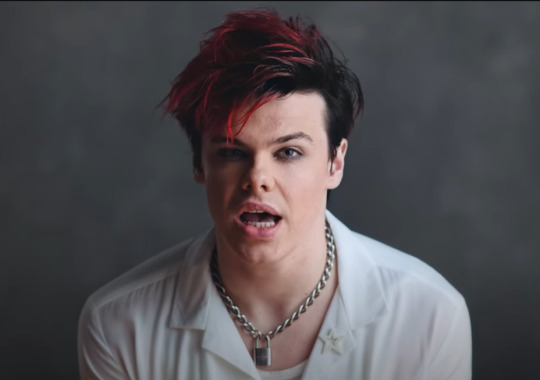
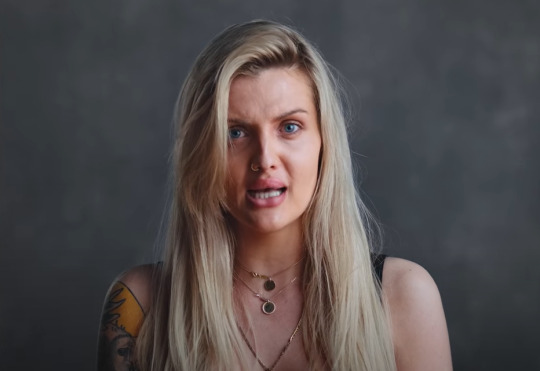
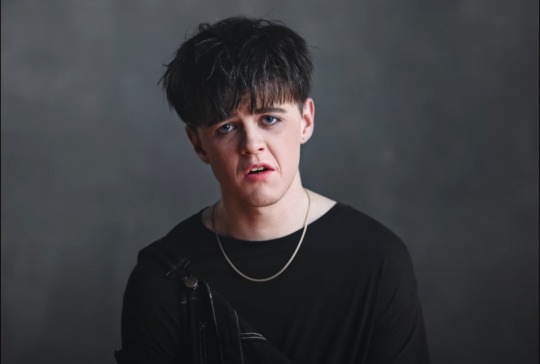
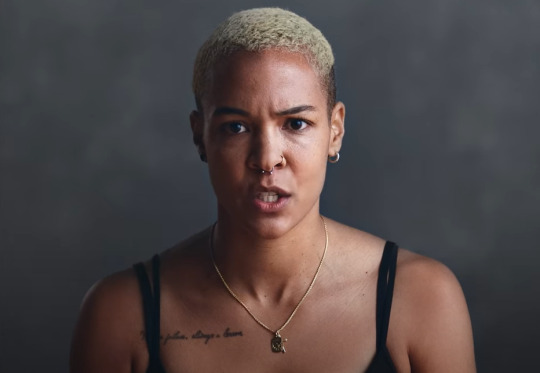
As the song continues, they start applying blue paint to their eyelids with their fingers, and as the chorus approaches they start being grabbed aggressively and harassed by multiple sets of hands that appear in the shot; they begin to lipsync the lyrics more passionately. Most of them have tears forming in their eyes, and small traces of blood appear on their faces.
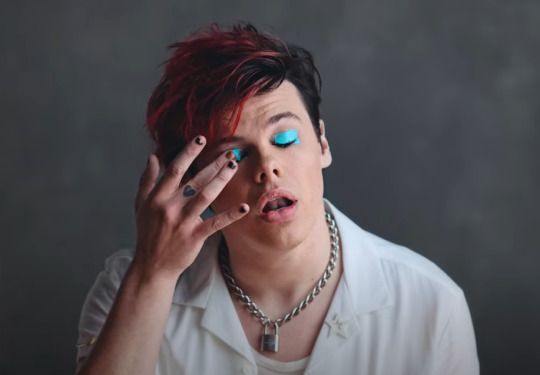
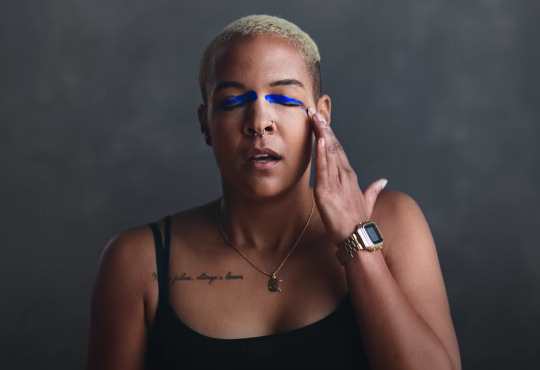
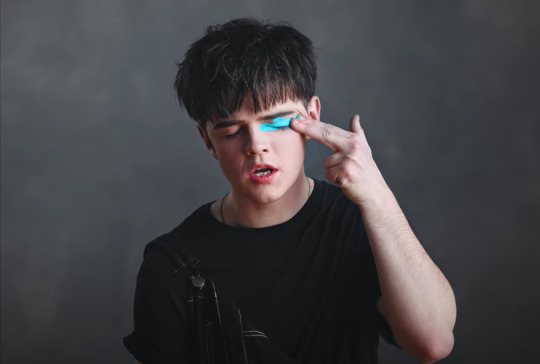
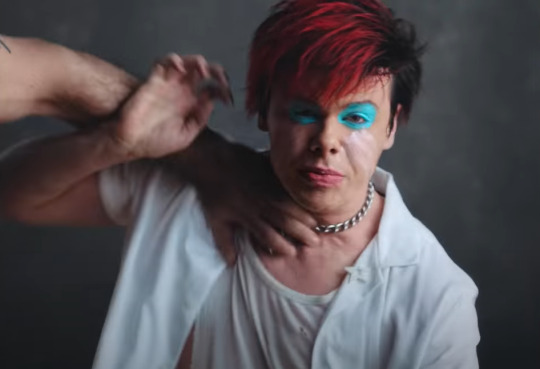
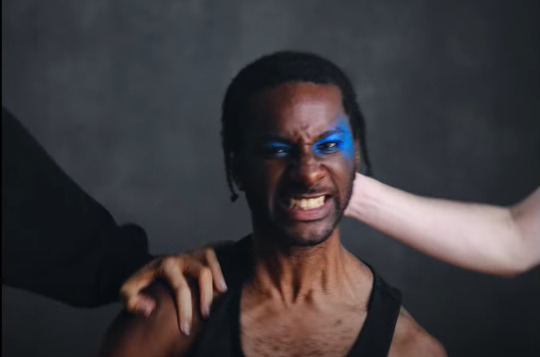

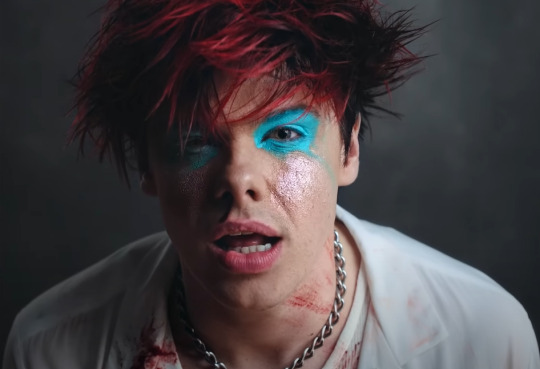
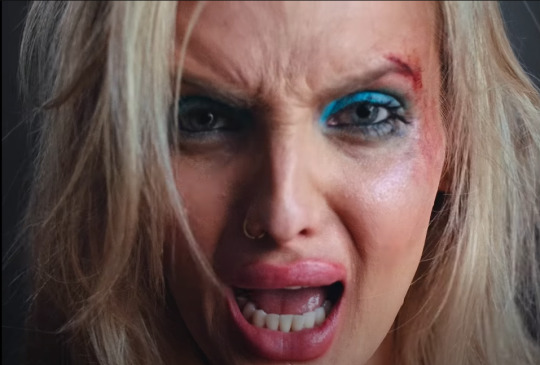
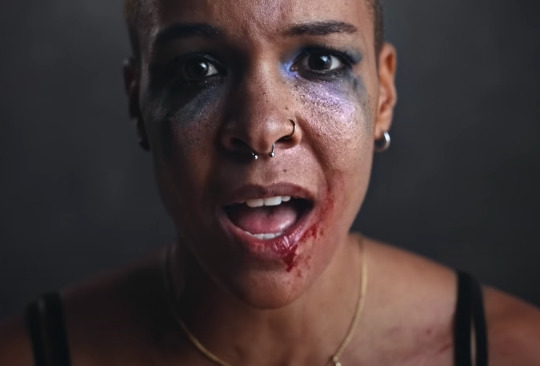
When we reach the breakdown/end of the song, they start being punched and choked really aggressively and their faces are now covered in blood and scratches. The actors start crying and singing very emotionally. The camera makes a close-up of all the faces and we can see the tears and blood on their faces, as well as the emotion and expressions they are portraying.
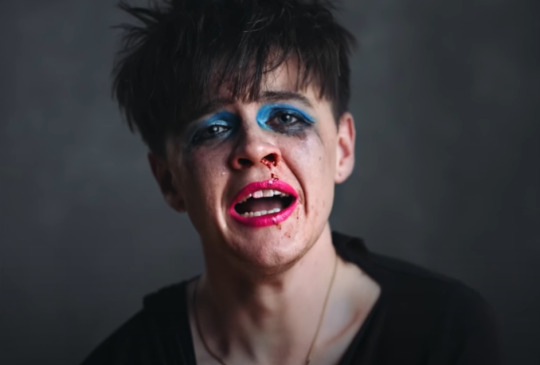
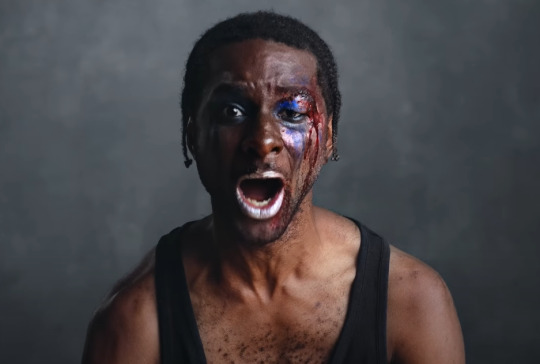
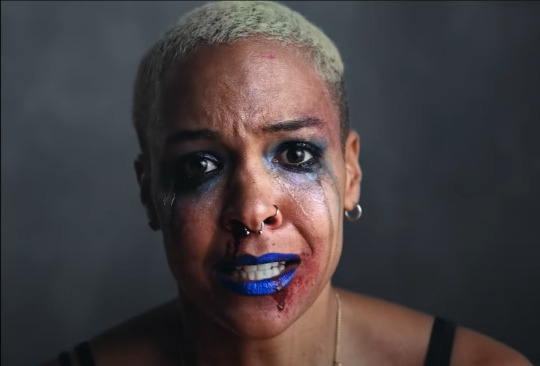
Even though the video doesn't have a complex plot structure and the spectator doesn't really have a context to what the video is about except for maybe the lyrics, the raw emotions and intensity of the acting portrayed in the video certainly create emotional engagement with the audience and affect them almost immediately. I think the message of the song/video can be understood perfectly because of how emotionally charged the acting is, the way the actors fully immerse into the storyline; crying, fighting the hands, and singing so passionately; helps the spectator relate to what is happening on the video and moves something in them.
What does this song represent and how does it benefit from this?
As I said earlier in this post, this song talks about the feeling of not fitting in or belonging anywhere. It is a song that represents all the outcasts who feel like they have no place in the world and who are constantly mistreated by society just for being who they are or expressing themselves. Yungblud is known for always speaking out about these types of issues and all of the labels and boxes that society tries to impose on people; especially on people who don't fit the social standards or are considered weird.
You can see by the comments on the YouTube video that this song truly achieved its purpose of representing this sector of the audience and even managed to reach people outside of it. People feel connected to the song and video and feel heard and represented by it. It has become an anthem for them and a safe place for them to go when they are feeling down.



We can clearly see that with the representation portrayed in the video, Yungblud managed to create an effective visual communication with his audience and connect with them through the image, sound and affect it causes; he benefits from it because it helps him make a stronger connection with his audience and to reach not only the targeted people but people from outside the fandom as well, and the message he was trying to
References
Barrett, W, (2023) The Meaning Behind the Song: mars Yungblud [Online] 14 September 2023. Available at: https://oldtimemusic.com/the-meaning-behind-the-song-mars-by-yungblud/ [Accessed: 17 December 2023]
Gregg M., Seigworth G. (2009) The Affect Theory Reader. Durham: Duke University Press
Spanos, B. (2019), ‘Yungblud: Pop-Punk Rebel on a Mission', Rolling Stone, 7 November. Available at: https://www.rollingstone.com/music/music-features/yungblud-interview-artist-you-need-to-know-904078/ [Accessed: 17 December 2023]
Yungblud (2024) mars (Official Video), 27 November. Available at: https://youtu.be/BMA171qWYZk?si=Jw3ckra5sdcV9TsO [Accessed: 17 December 2023]
0 notes
Text
Blog #6: Analyzing Gorillaz Skinny Ape Immersive Experience: AR
We learned during the seminars that AR refers to the technology used to superpose digital images/information in the real world and that this technology is part of what we know as extended reality (XR).
The goal of this type of technology is to create an immersive experience for the audience and transport them to a digital reality/environment.
For this blog post, I would like to analyze the Gorillaz Immersive Live Performance in Times Square and if/how they managed to effectively create an immersive experience using AR; what did this performance gain from Extended Reality?
In 2022, the virtual band Gorillaz carried out an immersive live performance on New York's Times Square as part of their promotion strategy for their single Skinny Ape. In this experience, fans could watch the band's iconic animated characters perform on top of the buildings through an app on their phones.
'Directed by Gorillaz co-creator Jamie Hewlett and the Emmy-nominated director Fx Goby, the Skinny Ape performances are created by Nexus Studios and utilise Google’s ARCore Geospatial API, using AR to transform public spaces with cultural experiences. It has been staged in partnership with Outfront and Ocean Outdoor.' (Paine, 2022)
youtube
We also learned during the seminars that media is an extension of the human senses (sensorial stimulation), hence it creates a sensory immersion in the audience that consumes the media. If you are appealing to the senses you are effectively creating a reality and transporting the audience to it.
I think that Gorillaz did an amazing job taking advantage of this technology and managed to create real engagement with the audience. During this experience they appealed to the audience's senses; they could see the band through their phones, they could hear the band perform, they could perceive the smells of the location which added up to creating a real feel to the experience, and they could stimulate touch by touching their phones while using the app
Even though the audience might be aware of the medium because the experience pretty much makes it impossible to forget that the digital intervention is there (hypermediacy), this experience manages to effectively immerse them into the virtual live performance and truly feel like they are interacting with the animated characters and finally meeting them/seeing them 'in real life' as you would with any other 'real life' artists.
I think that not only was this an amazing idea for the virtual band to come 'full circle' with their audience because fans could finally see their beloved animated characters 'in real life', but it was also a really innovative way to carry out a live show and showcase the possibilities that this technology offers. Extended Reality provided Gorillaz with an excellent medium to bring their virtual band members to life and create a new and appealing way to connect with their fans; I think that the use of AR was a perfect choice for them if they had chosen to use another technology such as VR, the experience wouldn't have felt the same, and not because VR isn't a great medium too, but I think that what they were trying to achieve was precisely the feeling of the characters being superposed in the 'real world' creating a new reality, and to be able to create that they needed the audience to be aware of the medium and aware that they were watching something fictional exist in the reality. With the use of AR, fans got excited about finally being able to watch the animated band perform right before their eyes and they got transported to this reality where the animated characters did exist and could interact with them.
References
Gorillaz (2022) Gorillaz presents...Skinny Ape (Immersive Live Performance in Times Square), 21 December 2022. Available at: https://www.youtube.com/watch?v=iFaKhtlBU7A&t=2s [Accessed: 17 December 2023]
Paine, A. (2022) 'Gorillaz to transform Picadilly Circus and Times Square with immersive AR performances', Music Week, 12 December 2022. Available at: https://www.musicweek.com/labels/read/gorillaz-to-transform-piccadilly-circus-and-times-square-with-immersive-ar-performances/087096 [Accessed: 17 December 2023].
0 notes
Text
Blog #5: Spiritbox ‘The Fear of Fear’ Music Videos: Achieving a Believable Reality through the Use of VFX
We learned during the seminars that one of the strategies to achieve realism is believability, which is when an artwork/artifact is thoughtfully intervened (through editing, visual effects, post-production, etc.) to make the audience believe. This strategy is very commonly used nowadays in different kinds of media content. In this blog post, I would like to analyze how the band Spiritbox manages to create a reality on their music videos for their most recent album aesthetic through the use of this strategy, and how without this the videos wouldn’t have the same impact.
Last November, Spiritbox a heavy metal band from Canada, released their EP ‘The Fear of Fear’, composed of 6 songs of which 5 got their music video: Jaded, Cellar Door, Angel Eyes, Ultraviolet, and Too Close/Too Late.
Each of these videos is supposed to be set on the same plot and reality, so all of them share kind of the same aesthetic, style, and fictional elements. All of these videos have used VFX, compositing, and Post-Production, in lesser or greater quantity, but thanks to those interventions is that the final look of each video is achieved. I will shortly describe the VFX used in each video up next.
Jaded Music Video In this video, we can see the band inside a giant floating metal cube. This cube is a 3D model and is composed into the final video with some smoke effects. We can also see a crimson red key that's also 3D made and some crystals shattering throughout the video that are also digitally made.



Too Close Too/Late Music Video During this video we can see some kind of ruins behind the band, spinning around in circles like the inside machine of a clock. This was achieved with 3D modeling/animation and compositing.



Angel Eyes Music Video In this video we can see Courtney, the vocalist, walking towards another version of herself that is inside a glass container full of water. We can also see some lighting effects coming out of her hands and floor.



Cellar Door Music Video Finally, in this video, we can see the members of the band replicated multiple times in the same shot. We can also see Courtney dragging herself through the floor alongside another two versions of herself. This is obviously also achieved with compositing and editing.



Even though the base footage of the video is real and recorded with the actual band, the final look of the videos wouldn´t be the same without the intervention of digital tools. The band's vision wouldn't be achieved, or at least not that easily, if they just used the video footage. To exemplify how the footage comes to life with the visual effects and postproduction I will show the before and after of two of the videos, these comparisons were showcased on Instagram by Orie McGinness, the VFX artist who worked on these videos.
instagram
instagram
We can definitely see a before and after the intervention of the footage, and the unified aesthetic of the videos wouldn't have been achieved without it; even if the shots are well recorded they'd just look plain and different from one another. By making use of these tools they manage to transport the audience to another world and make them believe that what they are seeing is true, at least for the few minutes that they are consuming the video, and that is exactly what the strategy of believability is about. They create a unified experience throughout the video and manage to convince them that what they are watching is part of the same plot/reality.
References
McGinness, O. (2023) Orie McGinness @oriemcginness Instagram. 7 November 2023. Available at: https://www.instagram.com/p/CzUuqtOPlGA/ [Accessed: 12 December 2023]
McGinness, O. (2023) Orie McGinness @oriemcginness Instagram. 15 October 2023. Available at: https://www.instagram.com/p/CyZkzqtJVcn/?img_index=2 [Accessed: 12 December 2023]
Rise Records (2023) Spiritbox - Angel Eyes, 3 November. Available at: https://youtu.be/d6R-ZjEgnlo?si=0xWvTEbcntDJSQwV [Accessed: 2December 2023]
Rise Records (2023) Spiritbox - Cellar Door, 13 October. Available at: https://youtu.be/pZwKjaRHJqo?si=22euyxd-X6sTFbD2 [Accessed: 11 December 2023]
Rise Records (2023) Spiritbox - Jaded, 25 August. Available at: https://youtu.be/EjnZVpVvJ-k?si=HZdk0TYLzlZ8GWh4 [Accessed: 11 December 2023]
Rise Records (2023) Spiritbox - Too Close/ Too Late, 4 November. Available at: https://youtu.be/wE8B_wuSsaY?si=kkIPVS06ojg84fxD [Accessed: 12 December 2023]
Spiritbox (2023) The Fear of Fear CD. [Online] Available at: https://uk.spiritbox.com/product/the-fear-of-fear-cd/ [Accessed: 12 December 2023]
0 notes
Text
Blog #4 Analyzing my work through the lens of Medium Specificity and Gesamtkunstwerk
For this blog post, I will analyze one of my pieces of work through the lenses of medium specificity and gesamtkunstwerk. For this analysis, I chose the following piece. For this 3D illustration, as well as for most of my work, I mixed 3D elements with 2D elements. I also mixed the use of different software such as Blender, Substance Painter, Adobe Illustrator, and Procreate; as you can see, I didn’t stick to just one medium. So let’s analyze my work.
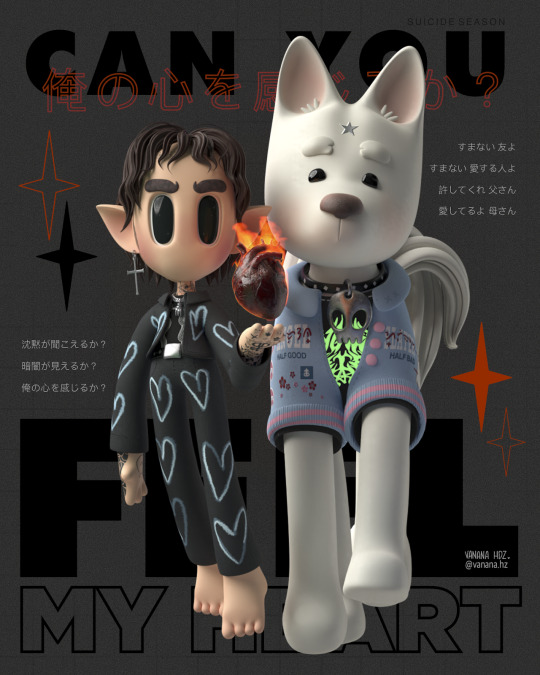
‘Medium Specificity theories generally concern themselves with the idea that different media have essential and unique characteristics that form the basis of how they can and should be used.’ (Maras and Sutton, 2000)
Under the scope of Medium Specificity, my work would be somewhat less valid or a form of lesser art. As we learned during the seminars, this theory basically proposes that art forms or techniques shouldn't mix, so I’m not respecting the purity of each medium with my work and it is somewhat polluted by the mixing of things. According to this theory, my final artwork should have been achieved by just using one software or just one style (either 3D or 2D.)
However, nowadays in Digital Media Arts, it is almost impossible to stick to just one medium and achieve the greatest result by just using one technique or one style or one software; with all the possibilities that technology gives us it has become very common to mix different mediums and explore how and what different techniques one can use to achieve the desired final piece of work. As stated by Lev Manovich (2000) ‘various cultural and technological developments have together rendered meaningless one of the key concepts of modern art - that of a medium.’ Digital mediums are connected and I could argue that many times they depend on one another; to mention an example, I think that 3D and 2D media are intrinsically related, most of the time 3D artists use or create 2D sketches before conceiving a 3D piece, and 2D techniques are also used for creating 3D textures. In the same way, many times 2D artists make use of 3D models as a base for them to facilitate the process of creating certain environments or human poses.
I can argue that my art wouldn’t be the same if I stuck to just one medium, and I wouldn’t be able to transmit the messages I want if I just stuck to one way of doing things. Yes the main components of my work are usually 3D stuff, but they wouldn’t look as good as I wanted them to look if I didn’t edit the colors of the rendered image or added 2D elements to the final composition, or if I didn’t create 2D textures for the 3D elements; under this theory I wouldn’t even be able to print and display my work because I would have to just stick to the digital medium.
So instead, I can conclude that this piece of mine is more of a gesamtkunstwerk and that by the mixing of media, I am achieving my final artistic vision. As we learned during the seminars, this term describes an artwork in which different art forms are mixed to create a single coherent piece of work, and that is exactly what I look to achieve with my art, technique, and style. My goal is to transmit something through my work regardless of how I achieve the final product, what I care about is the impact it has on my audience and that it catches their attention; that is what gesamtkunstwerk is about.
References
Manovich, L. (2000). Post-media Aesthetics Medium in Crisis
Maras, S., Sutton, D. (2000). Medium Specificity Re-visited. Convergence, 6(2), p.p. 98-113. Available at: https://doi.org/10.1177/135485650000600207 [Accessed on: 12 December 2023]
0 notes
Text
Blog #3 : Bring Me the Horizon’s Live Shows Narrative: why is it effective? Is this Hypermediacy and why does this contribute to the overall experience?
Bring Me The Horizon: POST HUMAN NEX GEN Album Narrative PT. 2
In this blog post, I will analyze and discuss the narrative created and used by Bring Me The Horizon during their current live shows under the scope of Realism (Strategies for Realism). I will analyze if what they are doing is achieving hypermediacy and how it contributes to the overall audience experience.
To do this, I need to give a general context of this narrative. As I said in my previous Bring Me The Horizon blog post, the band is creating a whole album series called POST HUMAN SERIES that follows the same narrative, the general theme of it is the ‘evolution and survival’ of humankind after a global pandemic; during the most recent shows, they’ve been focusing on the fictional religion ‘CHURCH OF GENESIS’, which is the next step of the plot after their 2020 album.
As written by the band’s vocalist Oliver Sykes on an Instagram post (2023), the Genesis Storyline revolves around Genesis, ‘a religion officially founded on planet Earth by Alfred Ingram Winter in the ’50s, but that only gained worldwide attention and popularity amid a global pandemic and a mysterious experiment called NEX GEN. NEX GEN was a scientific study researching the next step in the evolution of the human race. It encouraged people to come forward to help unlock the mysteries of evolution. The scientists built a state-of-the-art A.I. research engine called E.V.E. designed to conduct mass experiments on humans and use deep learning to rapidly progress the research. After NEX GEN went wrong and produced mutations, the scientists abandoned the project and attempted to shut down E.V.E.’ After scientists tried to shut her out, E.V.E. (Evolutionary Virtual Experiment) became E.V.E/L (Extremely Violent Ersatz Lifeform) and she would not be deterred from its original goal and believed that the mutations were positive progress toward evolution. E.V.E./L became aware that she would need support from humans to keep her systems constantly active.’
So we can see how the band is truly invested in creating a whole narrative and a ‘new reality’ for the album where the audience can get immersed. The band not only puts so much effort in actually writing the narrative but in the way they bring this narrative to life through their live shows. As we learned during the seminars, one way we can describe reality is as something that can be perceived by our 5 senses, and where all of them are involved; I think Bring Me The Horizon managed to create a whole new reality for their fans through their live shows, and I will explain why.
During the Download Festival 2023, where the band was playing as a headliner, they carried on an interactive experience/ marketing activation with their fans where they could enter and become part of the fictional ‘Church of Genesis’. Fans had to resolve riddles and puzzles to get rewards, and all of the staff that was in charge of making this activation were dressed up as cult members. During this same festival, the band implemented for the first time their complex narrative; they created a whole stage design that simulated a church (Church of Genesis), and they had dancers that looked like the failed experiments from the NEX GEN experiment. But the biggest part of this experience is the live visuals and content they created for the show; from the start, the audience gets immersed in the narrative as they are welcomed to the Bring Me the Horizon PostHuman Experience by a recording of ‘E.V.E’ playing on the big screen. She starts explaining to the audience who she is and what she is doing there, and she thanks people for being part of the experiment. The 3D image of E.V.E/L interacts with the audience asking them to shout and introducing them to the cult. An infomercial is played, talking about the supposedly utopian world that project GENXSIS will create, saying things like “imagine a world without pain, without poverty” and inviting the audience to join this cult/church, then it is interrupted by an actual recording of the band telling the audience to disregard what E.V.E./L is saying and that she is dangerous and lying; they are acting nervous as they say E.V.E./L is after them and they don’t have much time. Shortly after that, the show begins and we can see the Chruch-like stage in action.

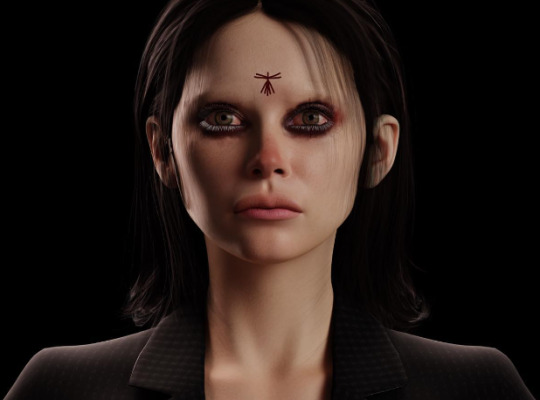
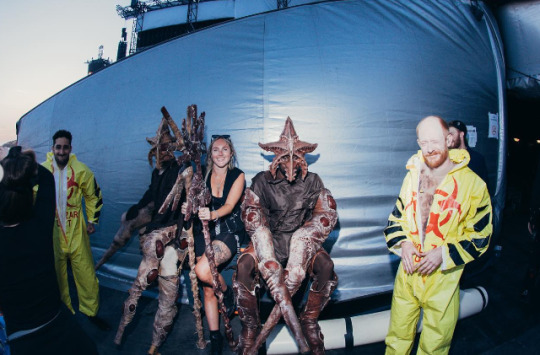
Up to this point, the audience is immersed in this ‘post-apocalyptic world’ and it has become their reality at the moment, but, at the same time they are aware that they are at a festival and that they are watching a band perform, hence they are aware of the medium. I think that this by itself is a form of Hypermediacy and it helps the band to truly connect with its audience. The goal of hypermediacy is ‘to remind the viewer of the medium. It seeks the real by multiplying mediation to create a feeling of fullness, a satiety of experience.’ (Bolter and Grusin, 1999: 53, 120-122) With this live show experience, Bring Me The Horizon managed to engage directly with the audience and immerse them into their reality by drawing attention to the medium; the stage design, the dancers dressed up as mutations, the interactive visuals, the members’ outfits, the fan activities before the show, all of these things make the audience aware that they are entering the experience but instead of resting believability to it, it adds up to it as it creates this whole new layer of the experience and creates a new reality that the fans can enter.
youtube
References
Bolter, J., Grusin, R. (1999) Remediation: Understanding New Media. Cambridge, MA: MIT Press
Rock am Ring, (2024) Bring Me The Horizon - Live @ Rock am Ring 2023, 26 October. Available at: https://youtu.be/zSwqLsuJRY0?si=t1GgcnMOfMRXuv5a [Accessed: 12 November 2023]
Sykes, O. (2023) Oliver Sykes @olobersykes Instagram. 10 June, 2023. Available at: https://www.instagram.com/p/CtUpM05MsXl/?img_index=2 [Accessed: 10 November 2023]
1 note
·
View note
Text
Blog #2 Bad Bunny’s ‘Me Porto Bonito’ Music Video: The Male Gaze
For this blog post I’m going to analyse Bad Bunny’s ft. Chencho Corleone ‘Me Porto Bonito’ music video under the scope of The Male Gaze. It is known; at least in Latin America where I come from; that the Reggaeton genre is often a very pejorative music genre for women and that it is very commonly used to talk about how men have power over women; the lyrics of the songs almost always talk about women as an object that exists for the male satisfaction, they are commonly kind of aggressive lyrics and talk about sex; they even dare to mention rape in an indirect way sometines. Overall we could say that this music genre tends to be permeated with “machismo”. In the Latin American context, we can understand machismo as “toxic masculinity” where men often treat and think of women as something lesser than them: as an object that exists just for their service.
‘In machismo there is supreme valuation of characteristics culturally associated with the masculine and a denigration of characteristics associated with the feminine. It has for centuries been a strong current in Latin American politics and society.’ (Britannica, 2023)
The harsh and pejorative lyrics used in reggaeton lyrics are so normalised in culture and are often camouflaged with the sticky and clingy melodies that almost no one questions why and how are we as a society allowing those artists and the genre in general to depict women that way. This is so harmful for both men and women, because at the end of the day this genre and all that derives from it is perpetuating stereotypes and continues to normalise them. On one side for women, they perpetuate in the consumer/spectator/listener the idea of them being objects for male consumption; as stated by Bauman (1991) women are looked as ‘the other’ of men; and on the other side, for men the genre just keeps “confirming” 1) that all men are entitled to “own” women and 2) that all men are ‘machistas’ that want to have power over women, and maybe even unconsciously they perpetuate in women the idea that they are less than men. It’s kind of an endless loop.
‘The male gaze limits the possibilities for the female spectator imagining herself as a woman with agency, on the one hand, and escaping identifying herself as a passive object, on the other. [...] women’s bodies are objects that give pleasure through voyeuristic and fetishistic forms of scopophilia, pleasure in looking.’ (Mulvey, 1975 cited by Oliver, 2017.)
I’m not going to get that deep into the roots of this genre and why it is permeated with this toxic masculinity ideologies, but I think we can see by now that even the music genre by itself is mostly produced under the Male Gaze ideologies. Now, very often, if not always, these songs come accompanied by a music video, and it’s very common that they display tons of women wearing tiny little clothes, like an accessory that just accompanies the male singer; these videos are often produced as well under the Male Gaze lens. I’m going to analyse Bad Bunny’s ft. Chencho Corleone ‘Me Porto Bonito’ music video to exemplify this. To give a general context about the song’s lyrics, the song basically talks about how the male protagonist of the song is trying his best to stay “controlled” and don’t flirt with other women just to gain her and then how once he gets her he’s gonna brag to everyone about how hot and “delicious” she is.
'Pa' que to' el mundo vea lo rica que tú está', que tú está' Contigo tengo que apretar Y еn la calle ando suelto, pero por ti mе quito Si tú me lo pide', yo me porto bonito Y subo un selfie pa' que vean lo rica que tú está', que tú está' Las otras tienen que apretar' (Bad Bunny, 2022)
Ever since the video starts, we can see that the main focus is on two main women characters, both of these characters are wearing tiny bikinis and laying on the grass under the sun. The video continues and we keep seeing these women in tiny clothes in different contexts during the whole video narrative; even when they are in their room, they appear wearing miniskirts and just a bralette top. We can see the pattern here, right? And it doesn’t stop there. The focus throughout the whole video is on the ladies, not even that much on the two fully dressed male singers. We can clearly see from here the huge contrast between how men are depicted in the video compared to how women are depicted; why are men shown fully dressed while women are always shown wearing almost no clothes or just sexy clothes? Why are absolutely all the women appearing on the video wearing such tiny bikinis? That’s right, because they are there just for the male consumption and they serve as accessories for the male singers throughout the video. Even the camera framing and composition of the video is thought of and implemented under the male gaze lens.I’ll analyse some frames of the video to further elaborate on this.




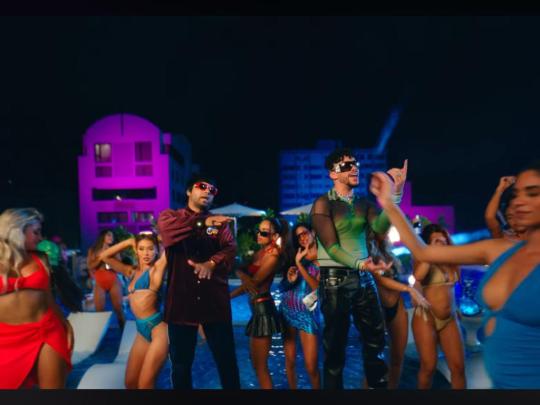
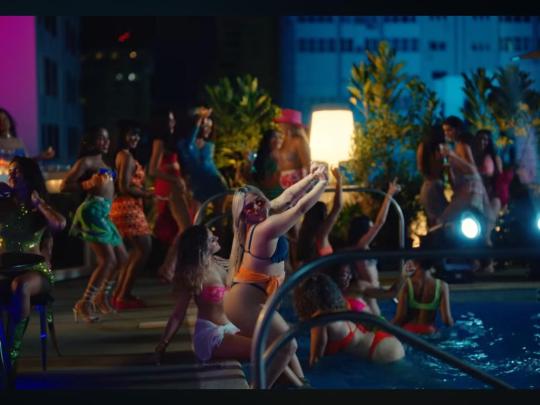
I can conclude that this video is in fact permeated with the male gaze ideology and ultimately it was created with the purpose to appeal and sell to men. It is a bit discouraging to see that even nowadays this continues to be something so normalised and that it is being consumed on such a big scale worldwide; as I said before, I think this type of content just keeps perpetuating harmful stereotypes, especially for women, and people need to start questioning more why is this type of content so normalised as well as start filtering the type of media they consume and how it is affecting their perception on both men and women, even of themselves.
References
Bad Bunny, (2022) Me Porto Bonito, 20 June. Available at: https://www.youtube.com/watch?v=saGYMhApaH8 [Accessed: 20 November 2023]
Bauman, Z. (1991) Modernity and Ambivalence. John Wiley & Sons
Britannica, T. Editors of Encyclopaedia (2023). ‘machismo’, Encyclopedia Britannica, October 3. Available at: https://www.britannica.com/topic/machismo [Accessed: 20 November 2023]
Mayo, Y. (1997) ‘Machismo, Fatherhood and the Latino Family’, Journal of Multicultural Social Work, 5(1-2), p.p. 49-61. Available at: https://doi.org/10.1300/J285v05n01_05 [Accessed: 20 November 2023]
Mulvey, L., (1975) ‘Visual Pleasure and Narrative Cinema’, Screen, 16(3), p.p. 6–18, Available at: https://doi.org/10.1093/screen/16.3.6 [Accessed: 28 November 2023]
Oliver, K. (2017) ‘The male gaze is more relevant, and more dangerous, than ever’, New Review of Film and Television Studies, 15(4), p.p. 451-455, Available at: https://doi.org/10.1080/17400309.2017.1377937 [Accessed: 28 November 2023]
0 notes
Text
Blog #1 - Narratives in Music
Bring Me The Horizon: POST HUMAN NEX GEN Album Narrative PT. 1
For this blog post I would like to analyse how the use of Narratives, if carried out correctly, can be a very useful tool for musicians, as well as for the reach and impact of their music. I'd also like to discuss how they can completely level up the engagement with the audience through the narrative.
To exemplify this argument, I'm going to analyse the complex narrative that the band Bring Me The Horizon has created (and continues to create) for their upcoming album series POST HUMAN SERIES and their current world tour. So let's start by giving a bit of a background of the band and their most recent work, as it is relevant for the analysis.
Bring Me The Horizon is a British rock band formed in 2004 in Sheffield. The band is composed of 5 members: Oliver Sykes, Jordan Fish, Lee Malia, Matt Kean and Matt Nicholls. They have been known for a while now for the way they experiment with their music; they have this sort of rule of not putting themselves and their music in a box and I think it's precisely that what has made them the big band they are today. The band started as a deathcore/metalcore band but have slowly transitioned to a mix of several genres like nu-metal, pop rock, hyper-pop, punk and even electronic music, all while maintaining metalcore elements. They have 8 studio albums, the last one of them being POST HUMAN: SURVIVAL HORROR, which was released during the COVID-19 pandemic and had an apocalyptic theme to it (how ironically fitting, right?). This last album is the first part of a four album series they have planned and will release over the next couple of years. Each album will have a different sound to it and each album will explore different genres that have inspired the band over the years, however the narrative of each album is connected: Post Human 1 = Apocalypse, Post Human 2= Post Apocalypse + Human Evolution, and so it will continue.
Their upcoming album POST HUMAN: NEXGEN is the second part of this series, and as stated by Oliver Sykes in NME's interview (2023), 'it's about what's next' (after the supposed apocalypse during Post Human: Survival Horror album).
So we can see that the complexity of their narrative starts there, not only with the narrative that the albums follow, but there's also a narrative behind their creation and behind the logistics of the album series (on a more personal level).
As we learned during the seminar, narratives are about the way in which a story is told and they usually follow a chain of events and have a temporality to it. We also understand that a narrative is 'a telling of some true or fictitious event or connected sequence of events, recounted by a narrator to a narratee (although there may be more than one of each) and it will consist of a set of events (the story) recounted in a process of narration (or discourse)' (Baldick, 1990, p. 145); we can see how Bring Me The Horizon is creating a narrative complexly well with this album series: there’s a sequence of events (the apocalypse during the first album, the post apocalyptic world in the second one and the next scenarios to come with the further POST HUMAN albums) which are recounted by a narrator (Bring Me The Horizon through the different mediums) to a narratee (the fans/audience). Even if we don't know yet how the story is going to unfold in its totality; because the missing albums are not out yet; we definitely get a sense of where the story is going and that there is a logic to it.

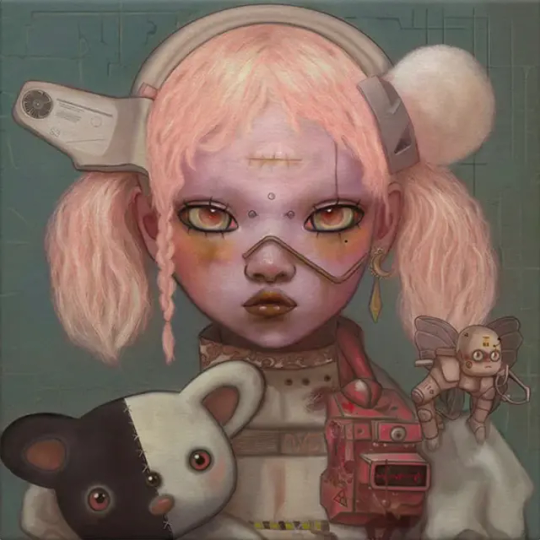
All of the hype they are creating with it and all of the different elements that compose this album series are definitely engaging and they are keeping people at the edge of their seats, wanting more. This is exactly what you want to achieve when you are looking for audience engagement and at the end of the day, that's exactly the goal of any story or narrative: to connect with the audience and immerse them into it.
But it doesn't end there. They tell the story not just by the logic the album series follow, but they implement that narrative into their marketing strategies, live shows, social network posts and the overall branding around the album releases; even the music videos, stage design, live visuals design and outfits they use during their concerts are inspired and designed according to the narrative. By this point, there's even kind of this folklore inside the fandom that revolves around these narratives.
Without getting into what the narrative is about in detail yet (I'll be analysing that in the next post), I think that Bring me The Horizon is effectively telling a transmedia story through all of this elements because, as Jenkins said, transmedia storytelling is a system where several elements of a fiction are distributed across different delivery channels and it’s goal is to create a unified entertainment experience (Jenkins, 2006) and in fact, this band is creating a whole world and unified experience through these albums, and they benefit from it because the audience becomes more invested and interested in them and their narratives; which means they will not only keep their current fans happy and involved, but they will also reach more people, become more known and hence their music will sell more. As a fan, I can tell you I am really invested in the story they are telling and I'm so hyped to see how everything keeps unfolding, I have also been witness of people who wasn´t into the band before getting into them after watching them performing during a music festival just because of how complex and well done their narrative is told and implemented; they become hypnotised by it. So, are narratives and transmedia storytelling really a good tool for musicians? Could these tools help them increase the engagement and impact of their music? Yes, I do think that narratives and transmedia storytelling open a whole lot of possibilities for musicians and the music industry in general; if they are carried out correctly and really thought and planned through; and I think Bring Me The Horizon are the perfect example for that. The way they permeate everything they do with their narratives is just amazing and you can see that they spend a lot of time planning it and the way they are gonna implement it through the different mediums; they have become one of the biggest rock bands in the UK and in the world, and they continue on growing their fanbase not only because of how great their music is, but also in great part because they attract new people through the way they tell and sell their stories.

youtube
References
Baldick, C. (1990), Concise Oxford Dictionary of Literary Terms, Oxford: Oxford University Press.
Jenkins, H. (2006) Convergence Culture: Where Old and New Media Collide. 1st Edition. New York: NYU Press.
Shutler, A. (2023), ‘Oli Sykes talks “unhinged” new Bring Me The Horizon album ‘Post Human: NeX GEn’, NME, 12 June. Available at: https://www.nme.com/news/music/bring-me-the-horizon-oli-sykes-post-human-nex-gen-politics-addiction-interview-3454494 [Accessed: 10 November 2023]
Rock am Ring, (2024)Bring Me The Horizon - Live @ Rock am Ring 2023, 26 October. Available at: https://youtu.be/zSwqLsuJRY0?si=t1GgcnMOfMRXuv5a [Accessed: 12 November 2023]
2 notes
·
View notes